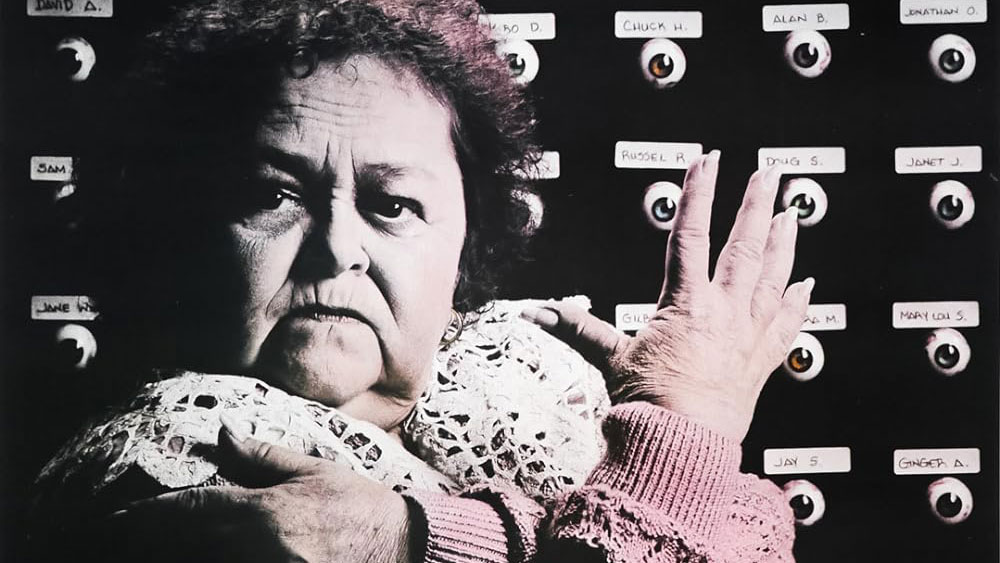Anguish at Roxie [SF]

Screen Slate is pleased to partner with Roxie for a special 35mm screening of Bigas Luna's Anguish, sponsored by MUBI.
Of the many meta-horror films that situate terror within the filmgoing experience, none are so fixated on the experience of viewership as the Spanish director Bigas Luna’s early English-language feature Anguish (1987). Its Russian-doll narrative structure spirals around a serial-killing ophthalmologist, John (Michael Lerner), who collects eyeballs under the hypnotic influence of his overbearing mother (Zelda Rubenstein of Poltergeist, 1982). Yet when the fourth wall suddenly ruptures, the setting shifts to a theatrical screening of The Mommy, the apparent film-within-a-film, during which a young patron is convinced that the man sitting near her may be a murderer. As her paranoia deepens, the parallels between the narratives gradually twist into something resembling Sherlock Jr. (1924) re-envisioned as a giallo film.
Few movies are so conceptually premised on their being seen among strangers in an auditorium; Anguish has an unparalleled ability to make its audience genuinely paranoid, giving each screening the feeling of a one-of-a-kind additional layer to the film’s structure. The effect begins with an act of hypnotism that mesmerizes not only John, but the audience itself. Rubenstein’s raspy incantations—“For years, you were like a snail: hiding, happy”—lull the viewer into a fugue state alongside shots of a slug, a moon-like metronome, and a spinning platter like something out of Marcel Duchamp’s Anemic Cinema (1926).
In this and other ways, Anguish taps into fundamental psychological and phenomenological experiences of filmgoing: hypnotism, illusion, somnambulation, obsessive collecting, and formation of parasocial bonds with people on screen and in the auditorium. The last is the subject of earlier ’80s cinephile-stalker movies including Fade to Black(Vernon Zimmerman, 1980) and The Fan (Edward Bianchi, 1981), about a homicidal film-distribution employee and a record-store clerk, respectively. But Anguish is clearly not intended to be read as a psychological study of its disturbed killers. It’s very much a film about Luna’s artistic forebears, the surrealists, and their own relationship to cinema. In some ways, Anguish is a work of pastiche, drawing on early avant-garde films by Buñuel, Duchamp, Dalí, and Hans Richter along with other sources as disparate as Keaton, Harry O. Hoyt’s The Lost World (1925), Eurosleaze, and Death Wish 3 (1985), whose poster makes a discrete appearance.
Screen Slate has shown Anguish in New York several times in recent years, and to celebrate our expansion into the Bay Area, we’re pleased to run it as our first collaboration with The Roxie. Any chance to catch it with an audience in 35mm is can’t-miss—just make sure you know who’s sitting behind you.
Anguish shows Thursday, October 26 at The Roxie on 35mm , presented by Screen Slate SF Bay and sponsored by MUBI.
The Roxie Theater is a proud MUBI GO theater. With MUBI GO, you can get a ticket every week to see the best new film showing in a theater near you. Plus, receive a wide selection of films to stream anytime, from iconic directors to emerging auteurs. All carefully chosen by MUBI’s curators.
